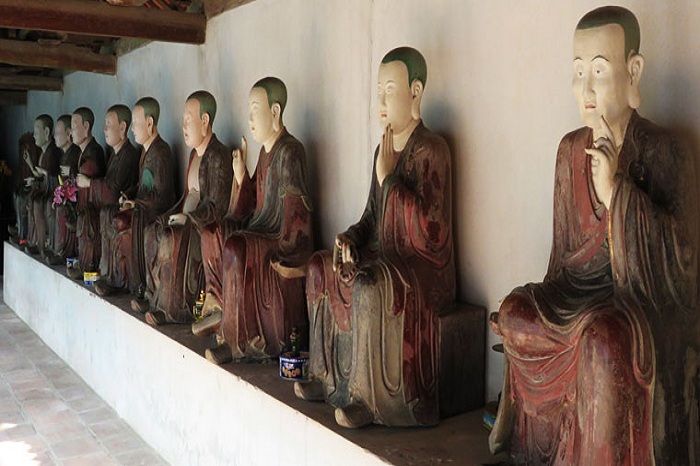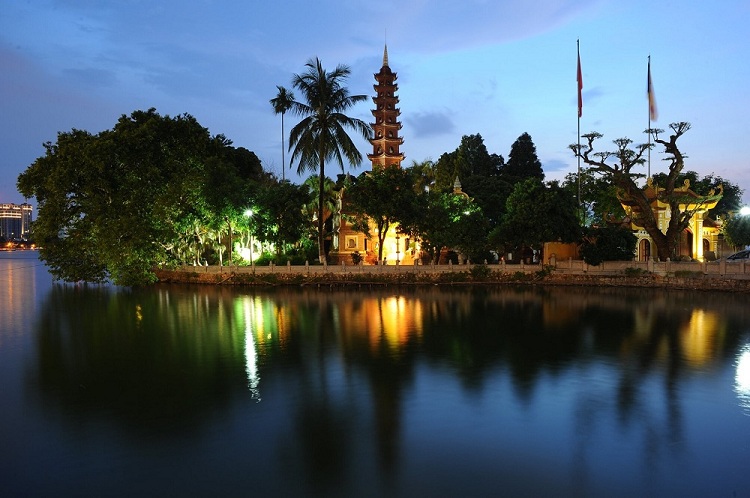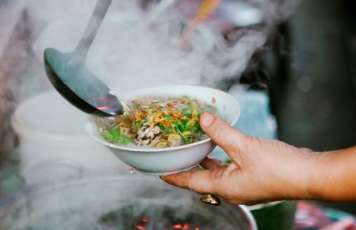
The 4 most beautiful pagodas in Hanoi to visit
- on Oct 2, 2020 By: Ngoc Nguyen
Buddhist traditions have shaped the history of Hanoi and its surroundings for centuries. Some of them are true architectural gems that offer travellers the full breadth of Vietnamese artistic genius. Discover some of the most beautiful and interesting pagodas in Hanoi and its surroundings that justify a nice excursion from the Vietnamese capital.
Tran Quoc Pagoda

Hanoi Tran Quoc Pagoda is the oldest pagoda in the Vietnamese capital, built in the 6th century during the reign of Emperor Ly Nam De (544-548), founder of the earlier Ly dynasty. Originally, the pagoda was located on the banks of the Red River and was then called Khai Quoc ("the foundation of the kingdom"). Faced with the encroachment of the rising river, the temple was moved in 1615 to the Kim Ngu ("goldfish") islet of West Lake, its current location, and was then renamed Tran Quoc. The pagoda can be recognized from afar thanks to its 15-metre-high brick stupa, decorated with 66 statues of Amitābha Buddha and composed of 11 floors that each represent a stage in the life of Buddha. Around this majestic stupa are smaller stupas of the monks who marked the history of the pagoda. Tran Quoc Pagoda has a lovely relaxing garden from which you can watch the sunset over West Lake. The garden houses a Bodhi tree, a tree considered sacred in Buddhism, which was donated in 1959 by Indian President Rajendra Prasad. The temple was recognized in 1989 as a historical monument of Vietnamese national culture and is an important Buddhist pilgrimage site. Therefore, proper attire is required to visit this elegant pagoda.
>> Read more: Tran Quoc - the oldest Pagoda in Hanoi city
Ba Da Pagoda

Built during the Ly dynasty (1010-1225), then rebuilt several times, Ba Da Pagoda is located in the city centre of Hanoi, close to Saint Joseph Cathedral and Hoan Kiem Lake. The story goes that in the 15th century, during consolidation works in Thang Long (Hanoi), a stone statue of a lady was discovered. Seeing it as a sacred sign sent by the earth goddess, the locals decided to build a pagoda named Ba Da (the stone lady) to honour the stone and show gratitude to the Goddess. The statue, unfortunately, disappeared in a fire in 1900 and although it was replaced by a statue of Buddha, its name remains. It’s a place of worship still popular with Hanoi people, especially since Ba Da pagoda is now the seat of the Buddhist association in the city of Hanoi.
Master's pagoda

The Master's pagoda or chua Thay in Vietnamese, located about thirty kilometres from Hanoi in a pretty corner of the countryside, was built during the reign of King Ly Nhan Tong to pay homage to the bonze Tu Dao Hanh, founder of the Vietnamese water puppets. Erected on the shores of the Dragon Pond, the Master's pagoda is made up of a set of three superb temples with typical Vietnamese architecture: Ha pagoda, Trung pagoda and Thuong pagoda. In the middle of the lake stands a magnificent pavilion on stilts, the oldest water puppet theatre dating from the 17th century flanked by pretty two covered bridges (moon bridge and sun bridge), topped with a tiled roof, built in 1602. Behind the Master's pagoda, a hill shelters several shrines dedicated to the goddess of mercy Quan Am and to the monk Tu Dao Hanh (Cac Co cave, Upper temple, Wind cave, One Roof pagoda) which are accessible by a small path.
>> Read more: In the beautiful scenery of Thay Pagoda
Tay Phuong Pagoda

This is another great excursion to do from Hanoi which combines perfectly with a visit to the Master's pagoda. Tay Phuong Pagoda is the second oldest pagoda in Vietnam. Built in the 13th century and restored at the end of the 17th century and in 1794 under the reign of the Tay Son, the Tay Phuong pagoda is of great interest for its richness, both cultural and architectural. This Buddhist place of worship consists of three temples which are distinguished by their magnificent curved roofs carved with flowers, leaves, dragons, lions and phoenixes. We also appreciate its walls built with bricks from the famous ceramic village of Bat Trang. Perched on Phat Tich Hill, facing Long Dau Mountain, Tay Phuong Pagoda is known to house 62 magnificent jackfruit statues, masterpieces of the 18th century. Among this exceptional collection, do not miss the chance to admire the statue of the ascetic Buddha in the second room, the eight judges of the underworld and the sixteen patriarchs with very expressive faces. The Tay Phuong Pagoda is rightly a pride of Vietnamese Buddhist art and a national historical and cultural site.
Related articles:
>> Duong Lam village – A trip in Hanoi
Comment
Other Blog
Categories
Latest News
on 31 Dec, 2025
on 31 Dec, 2025
 Español
Español Français
Français




















Morgane Ter Cock
on Dec 18, 2025HerbertPhomaMS
on Oct 19, 2025Lilyan Cuttler
on Oct 15, 2025Avenue17XC
on Sep 14, 2025Avenue18JL
on Jul 21, 2025